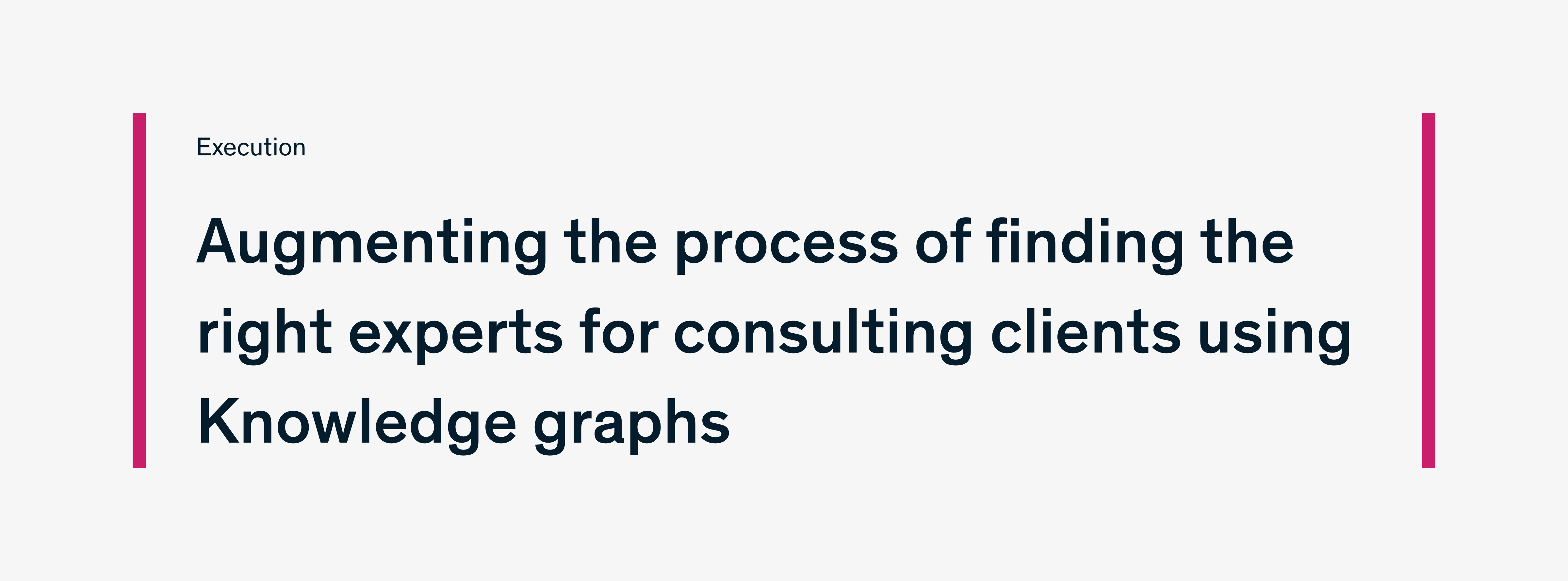

Staffing is a very manual process. It requires staffing managers (people who are responsible for finding right talent) to have deep domain knowledge and understanding of right keywords to preciesly find the right candidate profile. However, there are certain limitations to this approach and this case study explore a way to work around those limitation using Machine Learning.
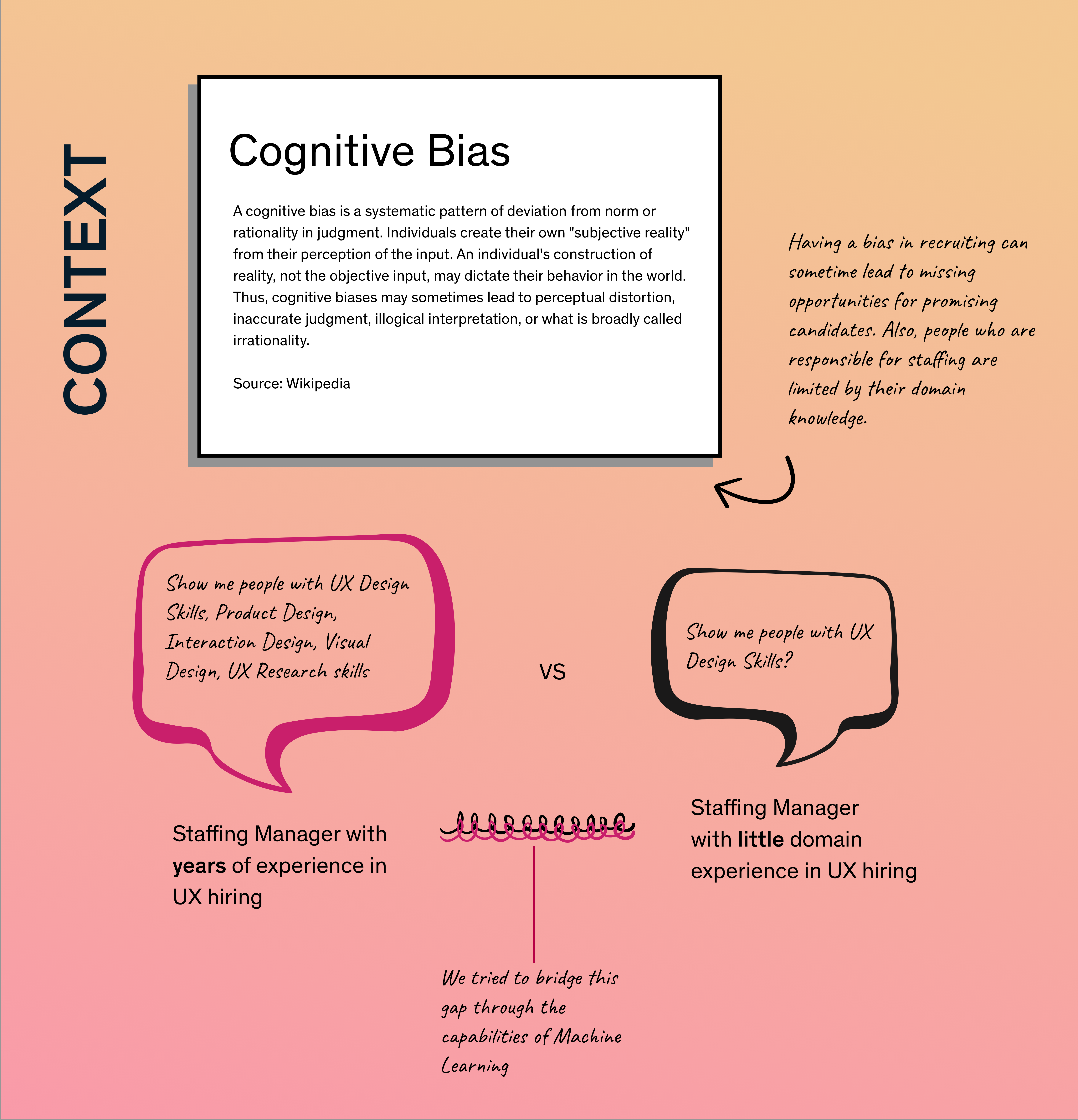
Although we knew that solving the staffing problem is our focus area, we, as a product team, wanted to understand this space better. As a lead designer for this project, I planned out a detailed design strategy that involved meeting with staffing managers from different parts of the world (remotely, though) and gathering thorough notes around how staffing works.
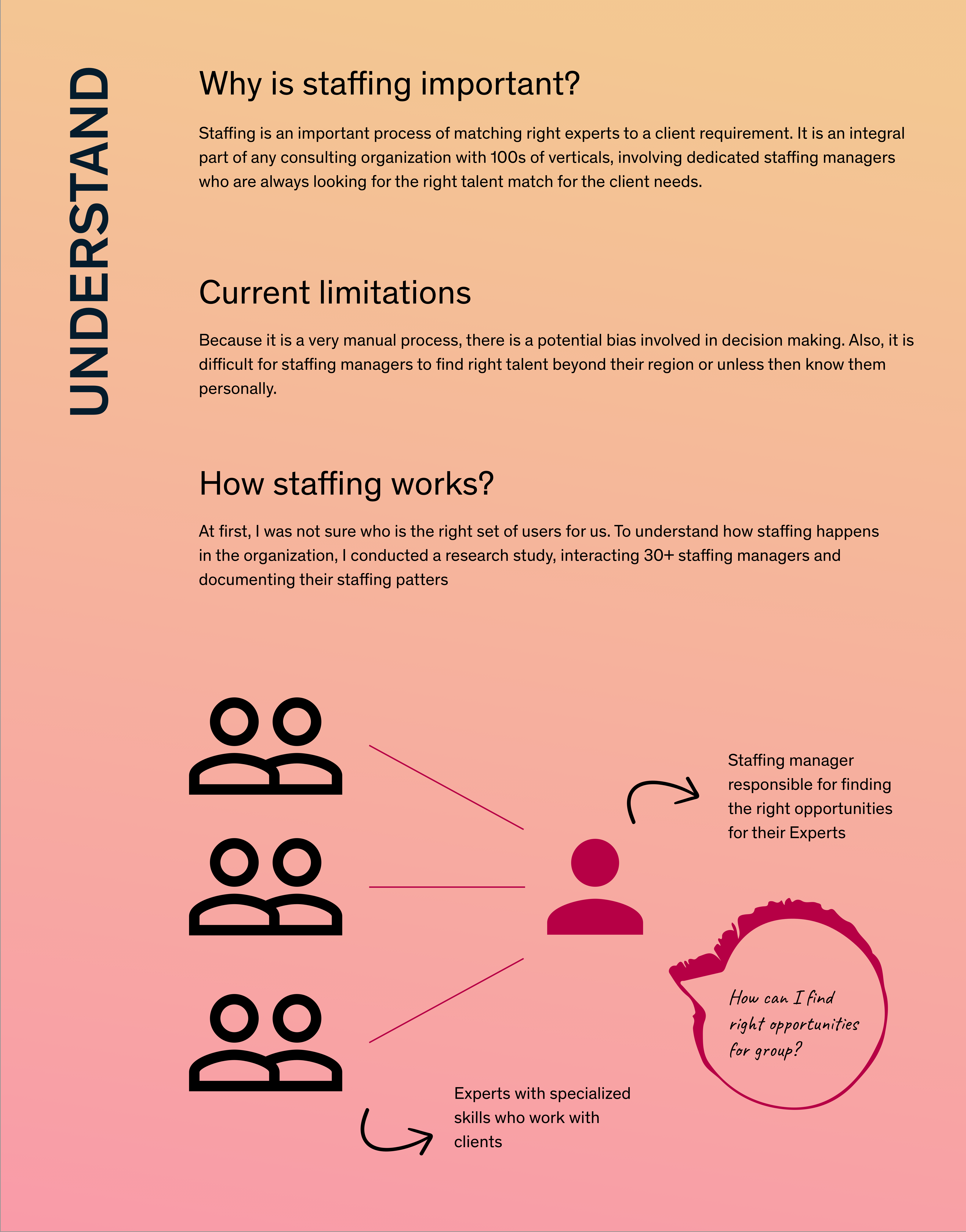
We prioritized technical skill recommendations as the area to focus on from all the discussions with our stakeholders. As the next steps, the team huddled together to develop the hypothesis that we wanted to validate through research.
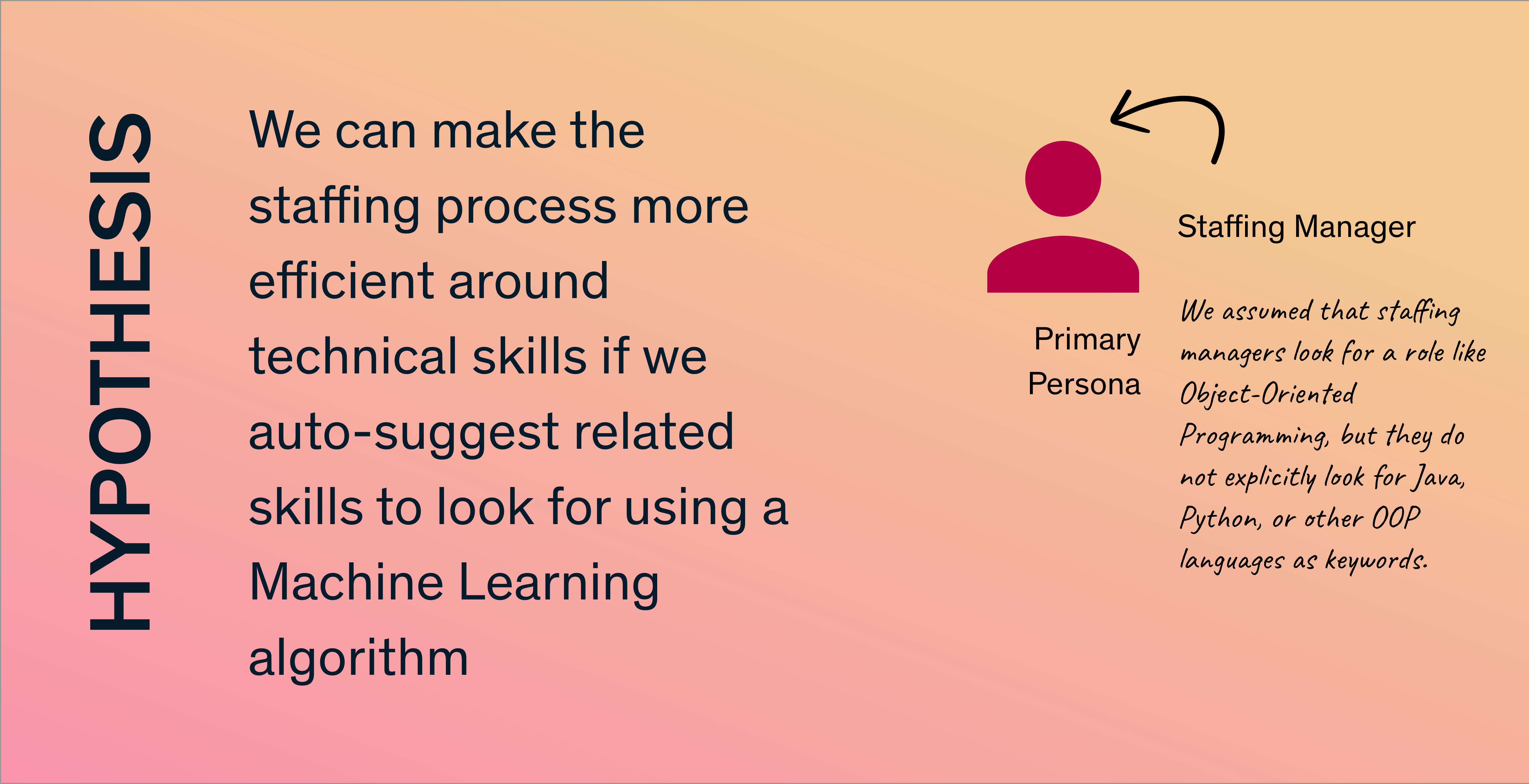
I collaborated with the Product Manager and data scientist from our team to conduct these remote interviews globally. Having a data scientist during our interview sessions was extremely beneficial for us. As conversations progressed, they got a real-time response to their algorithm predictions, which allowed them to tweak algorithm parameters as needed.
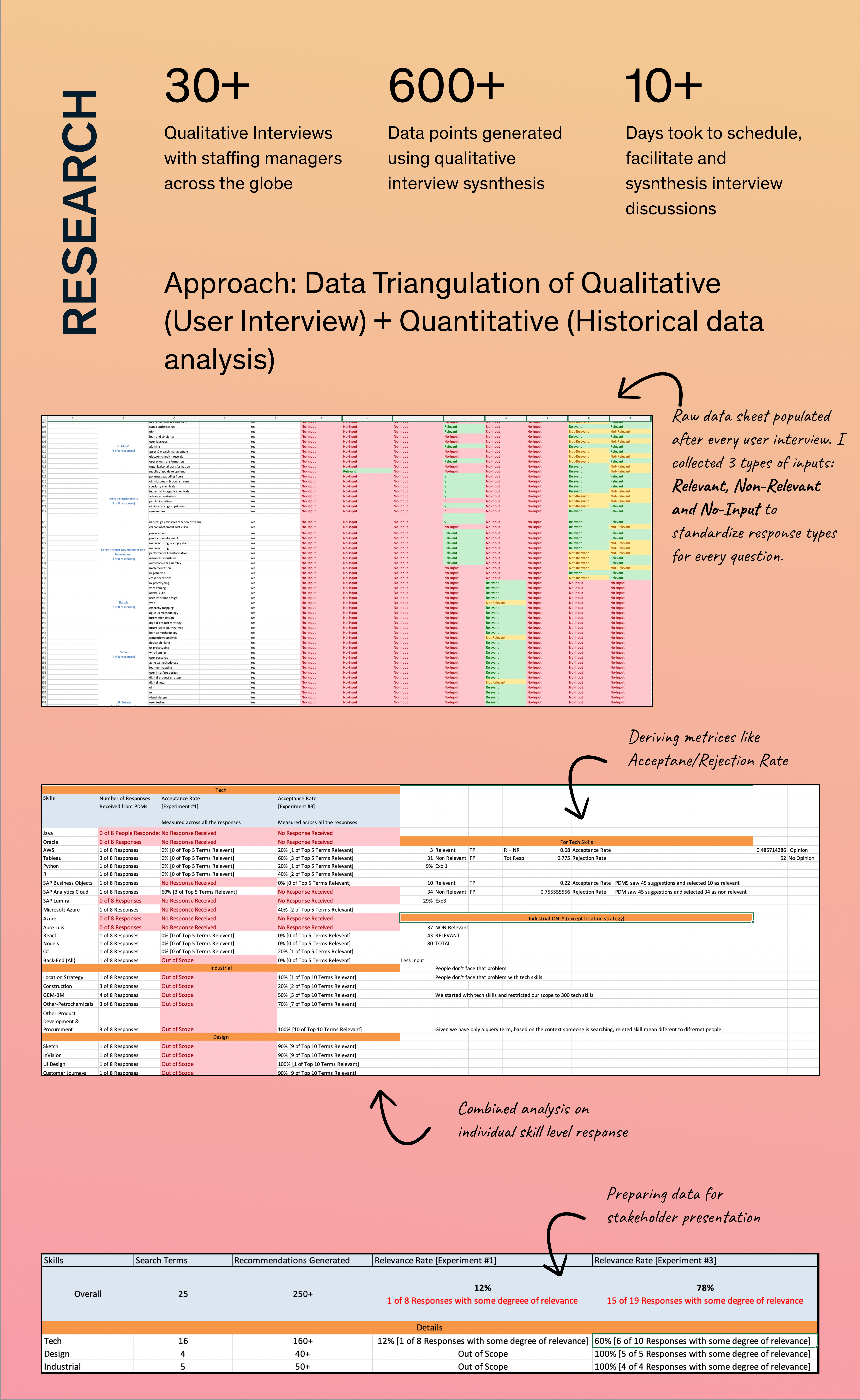
Data scientists mostly did this part as it involved building a standalone service that can take skill keywords as in input and provide alternate recommendations. Here is a schematic representation of the service.
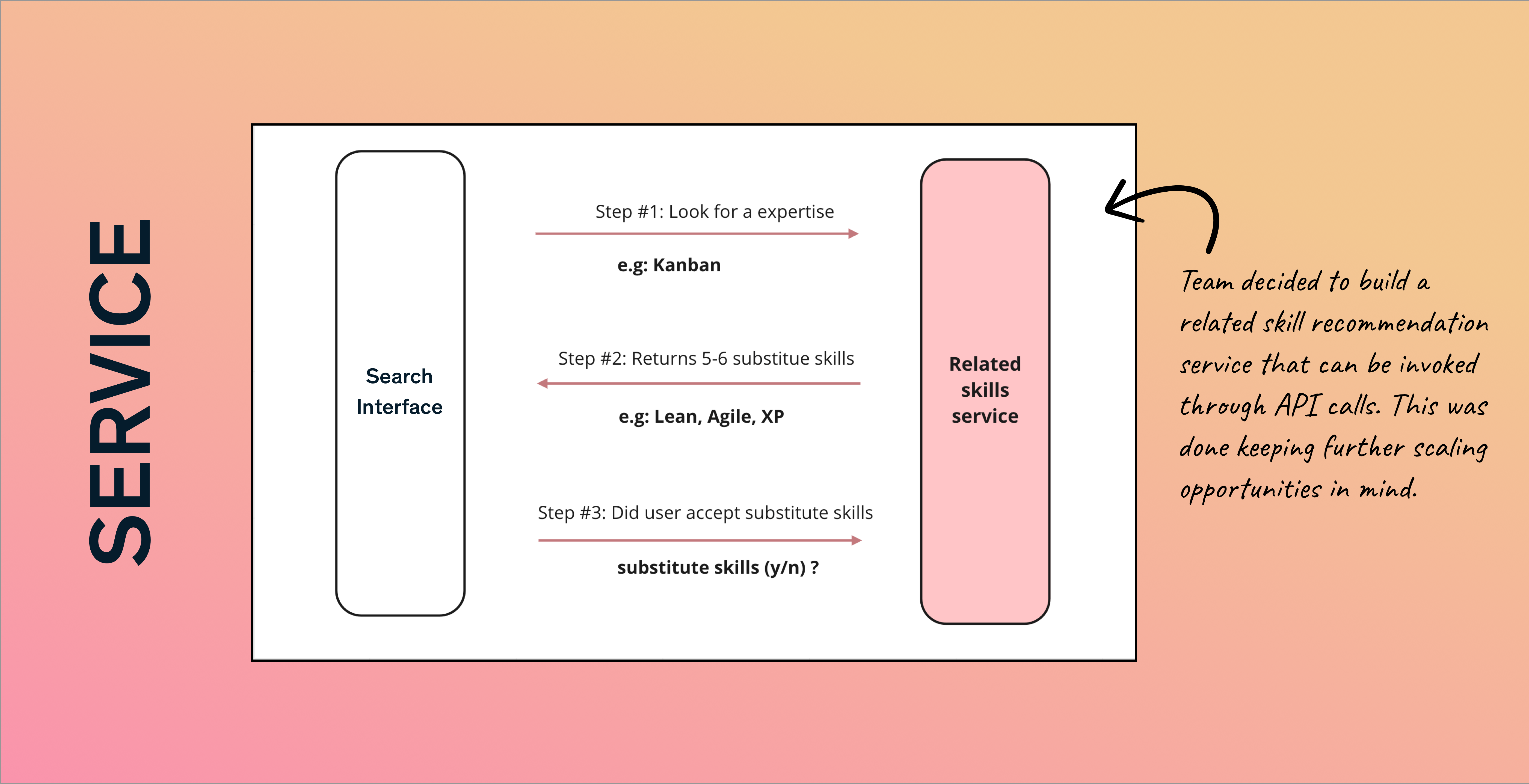
While we continued our efforts to build a standalone service, as a team, we observed some challenges while communicating our work to stakeholders. As a designer, this was a moment of awakening for me. Back of the mind, I know that being emphatic is part of my job, but assessing that situation, I realized I was far not being empathetic to my stakeholders.
Often, during our collaboration with other teams, I observed that people who are not from a data science background usually struggle to understand the context around Machine Learning applications. For example, the need for data labeling, working off an algorithm, an algorithm's efficiency, metrics used for algorithm performances, etc.
In this case, we were trying to build a Knowledge graph, and it was essential for us to convey the same to our stakeholders. As a team, we wanted them to participate in a real sense of collaboration and question our decisions to build this solution.

It took more than one effort to convey the value of work to our stakeholders. Combining traditional design assets like journey maps, personas, and the story generated through Knowledge graphs, we established the right context with our stakeholders during the presentation.
Launch DemoWe can only grasp limited information at any given amount of time. Especially during the presentation, it is essential to convey the story rather than through everything from your users and let them figure out all the details. Always try to reduce the cognitive load on your users wherever possible.